Scaffolding Companies Douglasville
Top 10 Scaffolding Contractors in Douglasville
Receive multiple Scaffolding Specialists quotes for your project today! Compare profiles, reviews, accreditations, portfolio, etc... and choose the best deal.
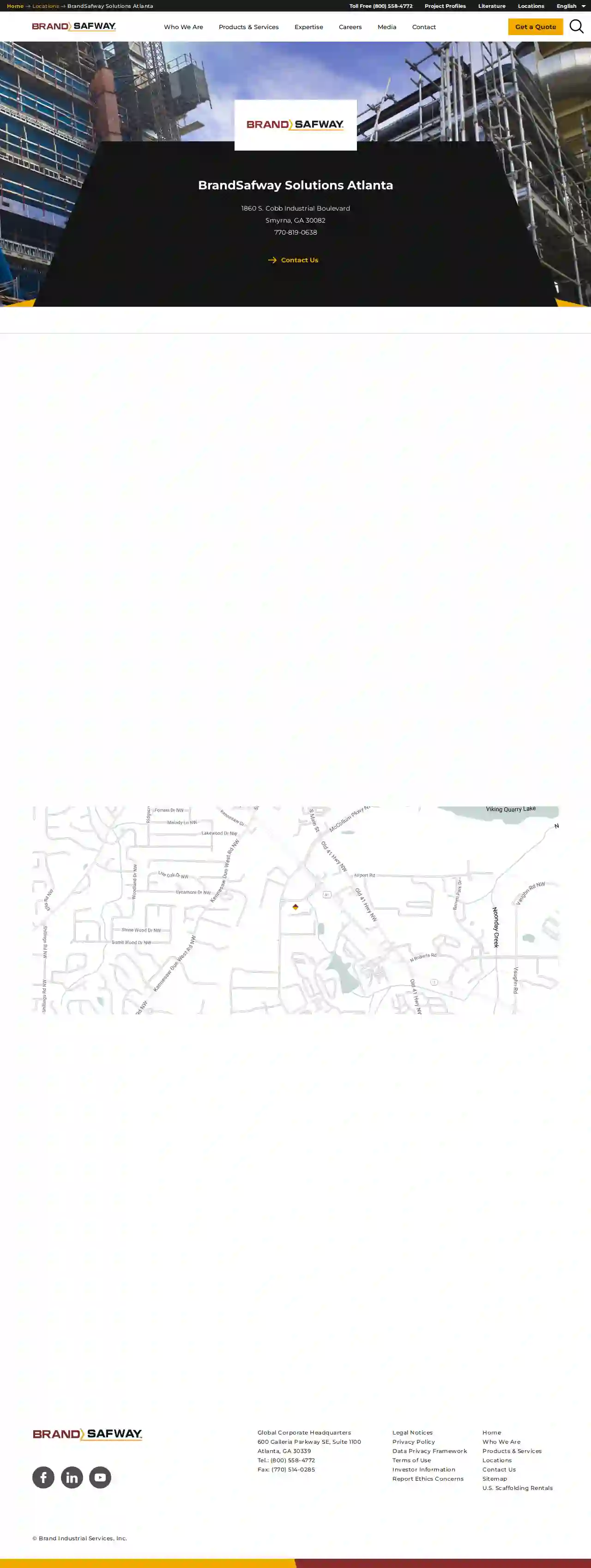
BrandSafway Solutions Atlanta
3.85 reviews3555 Clairmont Rd, Atlanta, 30349, USBrandSafway is a leading provider of access solutions and industrial services in Atlanta, Georgia. With a strong commitment to safety, quality, and customer satisfaction, we offer a wide range of services to support our clients' projects. From scaffolding and hoisting to insulation and coatings, our team of experts is dedicated to delivering innovative solutions that meet the unique needs of each project. At BrandSafway, we pride ourselves on our ability to provide customized solutions that meet the specific requirements of each project. Our team of experienced professionals works closely with clients to understand their needs and develop tailored solutions that ensure successful project outcomes. With a strong focus on safety, quality, and customer satisfaction, we strive to build long-term relationships with our clients and deliver exceptional results.
- Services
- Why Us?
- Accreditations
- Our Team
- Testimonials
Get Quote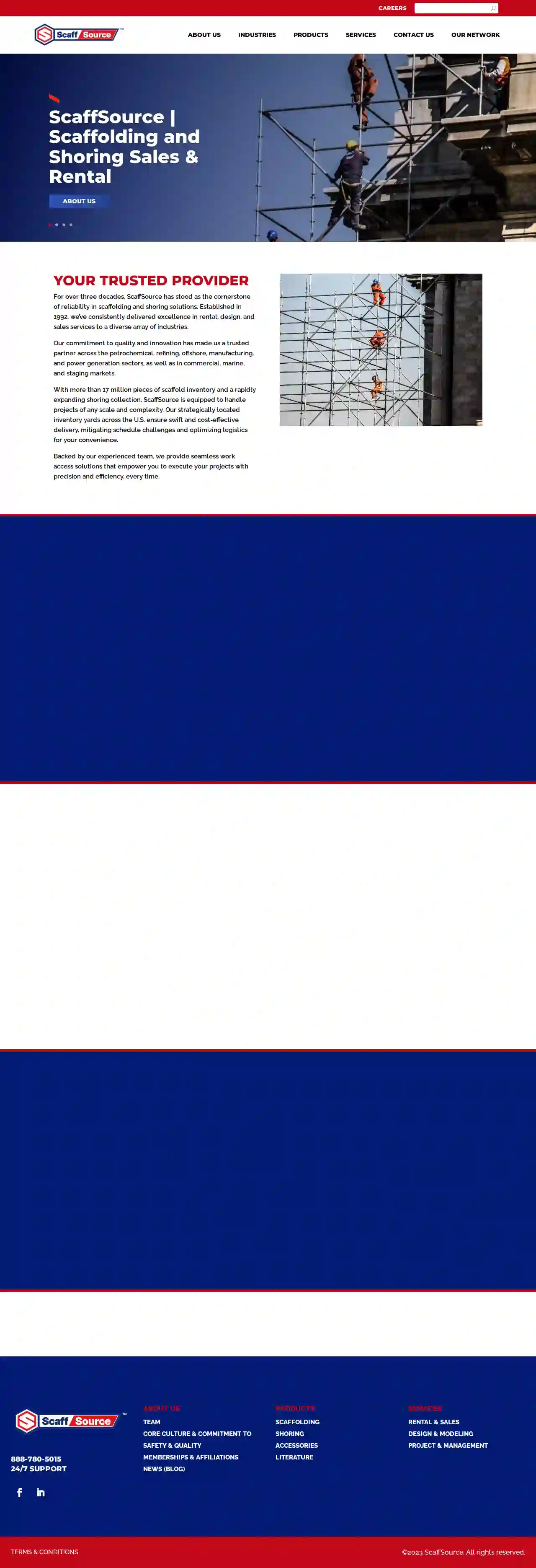
SCAFFSOURCE
Columbus, USScaffSource is a premier provider of scaffolding and shoring equipment sales and rentals, serving various industries since 1992. With over 17 million pieces of scaffold inventory and a growing shoring collection, we deliver excellence in rental, design, and sales services. Our strategically located inventory yards across the U.S. ensure swift and cost-effective delivery, mitigating schedule challenges and optimizing logistics for your convenience. Our commitment to quality and innovation has made us a trusted partner across the petrochemical, refining, offshore, manufacturing, and power generation sectors, as well as in commercial, marine, and staging markets. We provide seamless work access solutions that empower you to execute your projects with precision and efficiency, every time.
- Services
- Why Us?
- Accreditations
- Gallery
Get Quote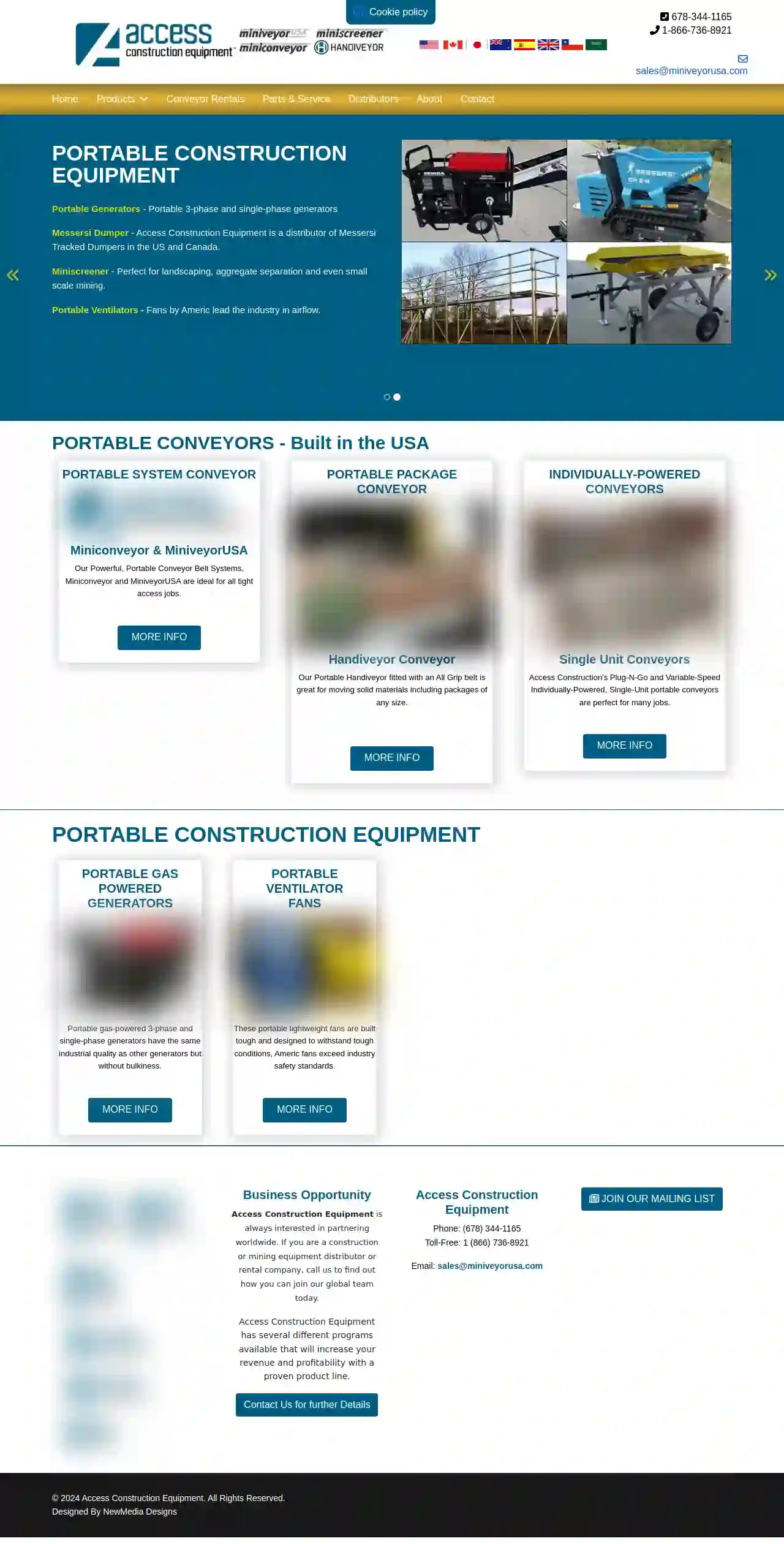
SCAFFOLDING PLATFORMS USA
Stone Mountain, GA, 1980 Parker Court, Ste C, 30087, USScaffolding Platforms USA is a distributor of the LOBO Advanced Platform System, providing a range of products including Work Platform System, Towerstore, Hop Up Platform, Portable Lifting Equipment, Tool Tray, Ladder Guard, and LOBO Gate. The company serves various industries such as Boeing Company, The Walt Disney Company, General Motors, Miller Coors, NASA, and Valero Energy Oil Refinery, among others. With over 15 years in business, Scaffolding Platforms USA is fully accredited and insured, offering a team of experienced professionals dedicated to providing top-quality services and products.
- Services
- Why Us?
- Accreditations
- Gallery
Get Quote
Savannah Steel Scaffold Co Inc
4.817 reviews615 Stiles Avenue, Savannah, 31415-3105, USAt Savannah Steel Scaffold, we pride ourselves on providing top-notch scaffolding solutions to the Savannah community. With over 20 years of experience in the industry, our team of experts has the knowledge and skills to tackle any project, big or small. We're fully accredited and insured, ensuring that you can trust us to get the job done safely and efficiently. Whether you're a contractor, builder, or homeowner, we've got you covered. Contact us today to learn more about our services and how we can help you achieve your goals.
- Services
- Why Us?
- Accreditations
Get Quote
AXIOS Industrial Group - Augusta
42 reviews10077 Grogans Mill Rd, Suite 450, The Woodlands, 77380, USAXIOS Industrial is a leading provider of industrial services, including scaffolding, insulation, coatings, and specialty solutions. With a proven track record of safely providing solutions for turnarounds, capital projects, and routine maintenance, AXIOS is committed to delivering on-time, on-budget results with an uncompromised commitment to workplace health. Our team of experts uses innovative technology to optimize cost, schedule, and quality within the overall project scope. Partner with AXIOS for single-point accountability, unparalleled reliability, lower costs, and maximum value.
- Services
- Why Us?
- Accreditations
- Gallery
Get Quote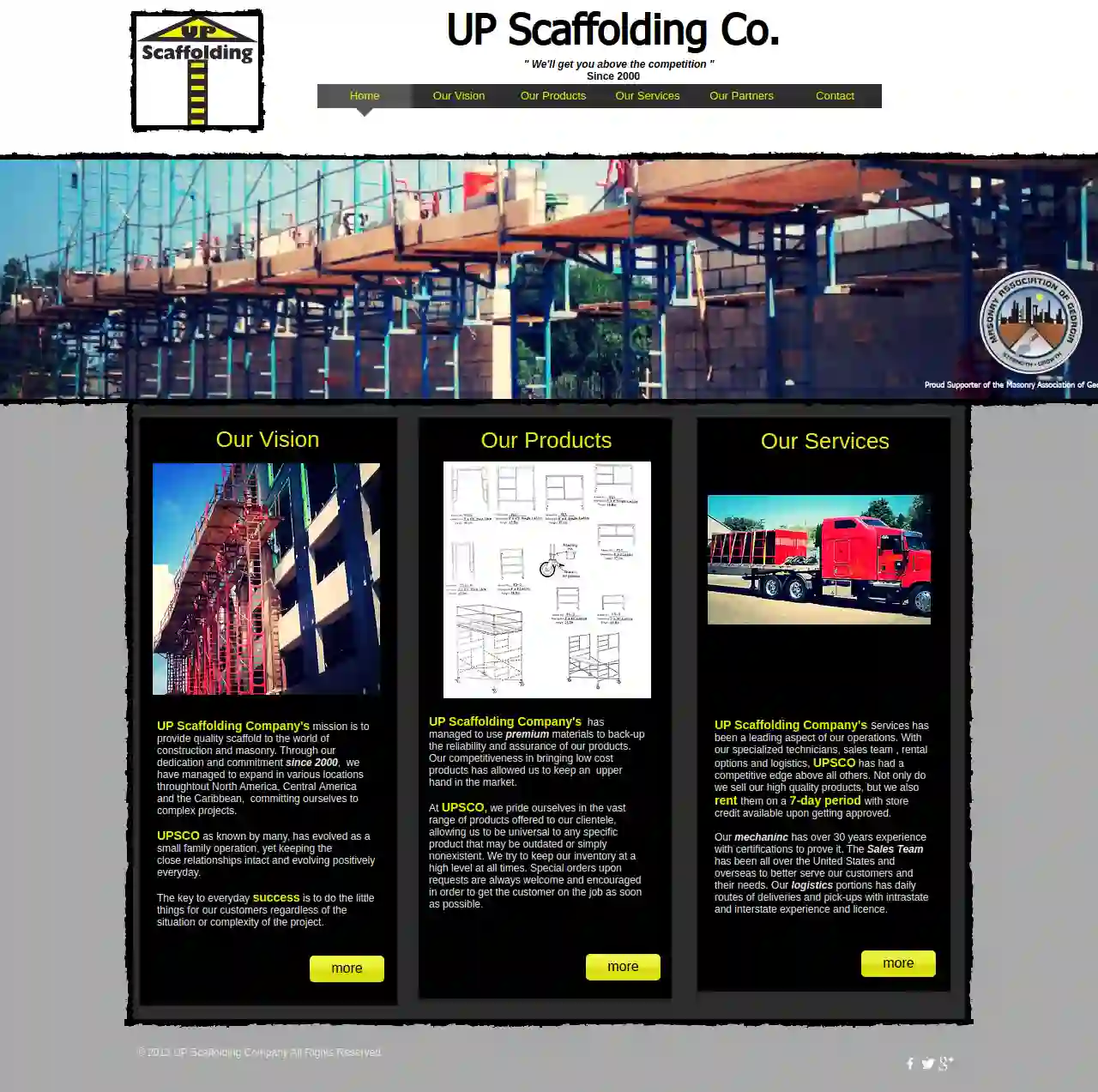
UP Scaffolding Co.
4.224 reviews123 Main St, Norcross, 30092, USUP Scaffolding Company is a leading provider of high-quality scaffolding solutions for the construction and masonry industries. Since 2000, we have been committed to delivering exceptional products and services to our customers. Our mission is to provide reliable and affordable scaffolding solutions that meet the unique needs of our clients. We take pride in our extensive range of products, which are designed to meet the demands of complex projects. Our team of experienced technicians, sales professionals, and logistics experts work together to ensure that our customers receive the best possible service. We offer rental options, store credit, and daily delivery and pickup routes to make it easy for our customers to get the scaffolding they need. At UP Scaffolding Company, we are dedicated to building long-term relationships with our customers. We believe in doing the little things that make a big difference, and we are committed to providing exceptional customer service every day.
- Services
- Why Us?
- Accreditations
- Gallery
Get Quote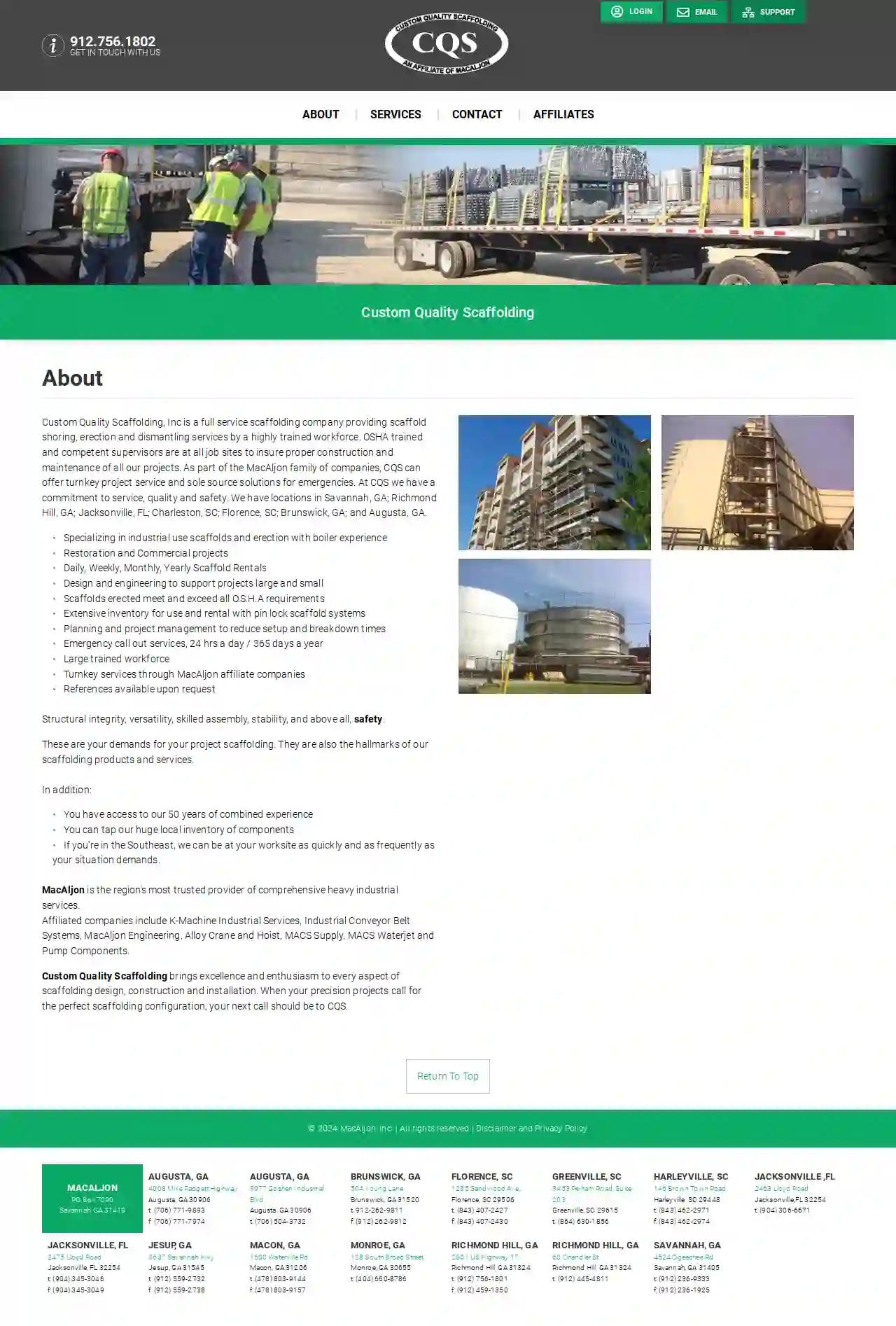
Custom quality scaffolding
52 reviewsP.O. Box 7090, Savannah, 31418, USAt MacAljon, we're a family of companies dedicated to providing comprehensive heavy industrial services. Our team at Custom Quality Scaffolding brings excellence and enthusiasm to every aspect of scaffolding design, construction, and installation. With over 50 years of combined experience, we offer turnkey project services and sole source solutions for emergencies. Our commitment to service, quality, and safety is unwavering. We have locations in Savannah, GA; Richmond Hill, GA; Jacksonville, FL; Charleston, SC; Florence, SC; Brunswick, GA; and Augusta, GA. Our services include scaffold shoring, erection, and dismantling, as well as daily, weekly, monthly, and yearly scaffold rentals. We also offer design and engineering to support projects large and small, and our scaffolds are erected to meet and exceed all O.S.H.A requirements. With a large trained workforce and extensive inventory for use and rental, we're equipped to handle any project. Whether you're in the Southeast or beyond, we can be at your worksite as quickly and as frequently as your situation demands.
- Services
- Why Us?
- Accreditations
- Our Team
- Testimonials
- Gallery
Get Quote
SCAFFSOURCE
51 reviewsAtlanta, USFor over three decades, ScaffSource has stood as the cornerstone of reliability in scaffolding and shoring solutions. Established in 1992, we’ve consistently delivered excellence in rental, design, and sales services to a diverse array of industries. Our commitment to quality and innovation has made us a trusted partner across the petrochemical, refining, offshore, manufacturing, and power generation sectors, as well as in commercial, marine, and staging markets. With more than 17 million pieces of scaffold inventory and a rapidly expanding shoring collection, ScaffSource is equipped to handle projects of any scale and complexity. Our strategically located inventory yards across the U.S. ensure swift and cost-effective delivery, mitigating schedule challenges and optimizing logistics for your convenience. Backed by our experienced team, we provide seamless work access solutions that empower you to execute your projects with precision and efficiency, every time.
- Services
- Why Us?
- Gallery
Get Quote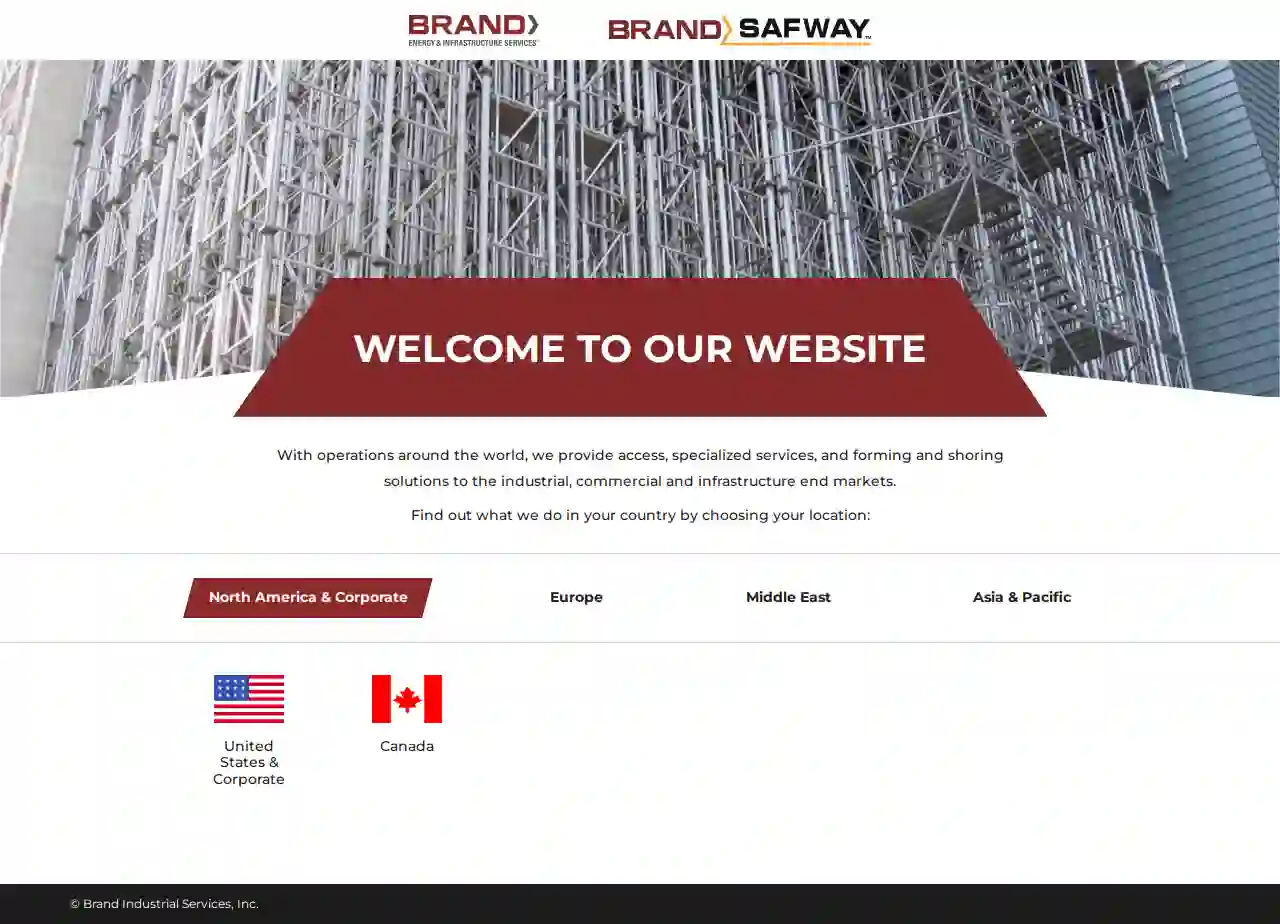
Brand Energy and Infrastructure Services
51 reviewsColumbus, USWelcome to our website. With operations around the world, we provide access, specialized services, and forming and shoring solutions to the industrial, commercial and infrastructure end markets.
- Services
- Why Us?
- Gallery
Get Quote
BSE Rents
4.249 reviews6319 District Blvd., Bakersfield, 93313, USBSE Rents is your one-stop shop for all your equipment rental needs. We offer a wide variety of equipment for both residential and commercial use, including air compressors, barricades, compaction equipment, concrete placing equipment, floor installation equipment, generators, lighting equipment, handheld tools, heaters, coolers, ladders, landscaping equipment, lift equipment, paint sprayers, plumbing equipment, pumps, scaffolding, tractors, trailers, welding equipment, and more. We are an authorized dealer for Stihl, Honda, and Hustler Turf Equipment. Our team of experienced professionals is here to help you find the right equipment for your project, and we offer competitive rates and flexible rental terms. We have locations in Bakersfield, Tehachapi, and Visalia, California. At BSE Rents, we understand that your time is valuable. That's why we offer a convenient online ordering system and a 24/7 customer service hotline. We also offer a variety of financing options to make renting equipment affordable for everyone. Whether you're a homeowner, contractor, or business owner, BSE Rents has the equipment you need to get the job done right. Contact us today to learn more about our products and services.
- Services
- Why Us?
- Gallery
Get Quote
Over 2,353+ Scaffolding Contractors on our platform
Our scaffolding contractors operate in Douglasville and surrounding areas!
ScaffoldingHQ has curated and vetted Top Scaffolding Contractors arround Douglasville. Find the most trustworthy contractor today.
Frequently Asked Questions About Scaffolding Companies
- Hire Professionals: Just like erection, dismantling should be done by qualified and experienced scaffolding erectors.
- Reverse the Erection Process: The dismantling process should generally follow the reverse order of erection.
- Clear the Area: Ensure the area below is free from people and obstacles.
- Lower Materials Safely: Use ropes or other safe methods to lower dismantled components to the ground.
- Inspect Components: As components are removed, inspect them for damage and store them properly for future use.
- Project Height and Access: The height of the structure and the accessibility of the working area are primary considerations.
- Load Capacity: The weight of workers, materials, and equipment that the scaffolding needs to support.
- Project Complexity and Shape: The shape and complexity of the structure may necessitate specialized scaffolding configurations.
- Ground Conditions: The type of ground (soft, uneven, sloping) will influence the scaffolding foundation and support requirements.
- Duration of Use: The length of time the scaffolding will be needed can impact the choice of system.
- Budget: Different scaffolding types have varying costs.
- A temporary structure with a larger platform for workers and materials.
- Offers greater stability and working space.
- Suitable for tasks requiring movement and multiple workers.
- Used for higher elevations and more complex projects.
- Used for reaching specific points at height for short durations.
- Less stable than scaffolding, requiring more caution and balance.
- Not suitable for tasks involving heavy materials or extended work periods.
- Licensing and Insurance: Verify their licenses are current and that they have adequate insurance coverage.
- Experience: Choose a company with a history of successfully completing similar projects. Ask for references and check their portfolio.
- Safety Record: Inquire about their safety practices and accident history. A strong safety culture is essential.
- Professionalism: Observe their communication, responsiveness, and attention to detail. A reputable company will be organized and transparent.
- Reviews and Testimonials: Read online reviews and feedback from previous clients to assess their reputation.
- Industry Affiliations: Membership in professional organizations like the NASC (National Access & Scaffolding Confederation) indicates a commitment to industry standards.
How do I dismantle scaffolding safely?
How do I choose the right type of scaffolding for my project?
What is the difference between a scaffold and a ladder?
Scaffolding:
How do I know if a scaffolding company is reputable?
How do I dismantle scaffolding safely?
- Hire Professionals: Just like erection, dismantling should be done by qualified and experienced scaffolding erectors.
- Reverse the Erection Process: The dismantling process should generally follow the reverse order of erection.
- Clear the Area: Ensure the area below is free from people and obstacles.
- Lower Materials Safely: Use ropes or other safe methods to lower dismantled components to the ground.
- Inspect Components: As components are removed, inspect them for damage and store them properly for future use.
How do I choose the right type of scaffolding for my project?
- Project Height and Access: The height of the structure and the accessibility of the working area are primary considerations.
- Load Capacity: The weight of workers, materials, and equipment that the scaffolding needs to support.
- Project Complexity and Shape: The shape and complexity of the structure may necessitate specialized scaffolding configurations.
- Ground Conditions: The type of ground (soft, uneven, sloping) will influence the scaffolding foundation and support requirements.
- Duration of Use: The length of time the scaffolding will be needed can impact the choice of system.
- Budget: Different scaffolding types have varying costs.
What is the difference between a scaffold and a ladder?
Scaffolding:
- A temporary structure with a larger platform for workers and materials.
- Offers greater stability and working space.
- Suitable for tasks requiring movement and multiple workers.
- Used for higher elevations and more complex projects.
- Used for reaching specific points at height for short durations.
- Less stable than scaffolding, requiring more caution and balance.
- Not suitable for tasks involving heavy materials or extended work periods.
How do I know if a scaffolding company is reputable?
- Licensing and Insurance: Verify their licenses are current and that they have adequate insurance coverage.
- Experience: Choose a company with a history of successfully completing similar projects. Ask for references and check their portfolio.
- Safety Record: Inquire about their safety practices and accident history. A strong safety culture is essential.
- Professionalism: Observe their communication, responsiveness, and attention to detail. A reputable company will be organized and transparent.
- Reviews and Testimonials: Read online reviews and feedback from previous clients to assess their reputation.
- Industry Affiliations: Membership in professional organizations like the NASC (National Access & Scaffolding Confederation) indicates a commitment to industry standards.